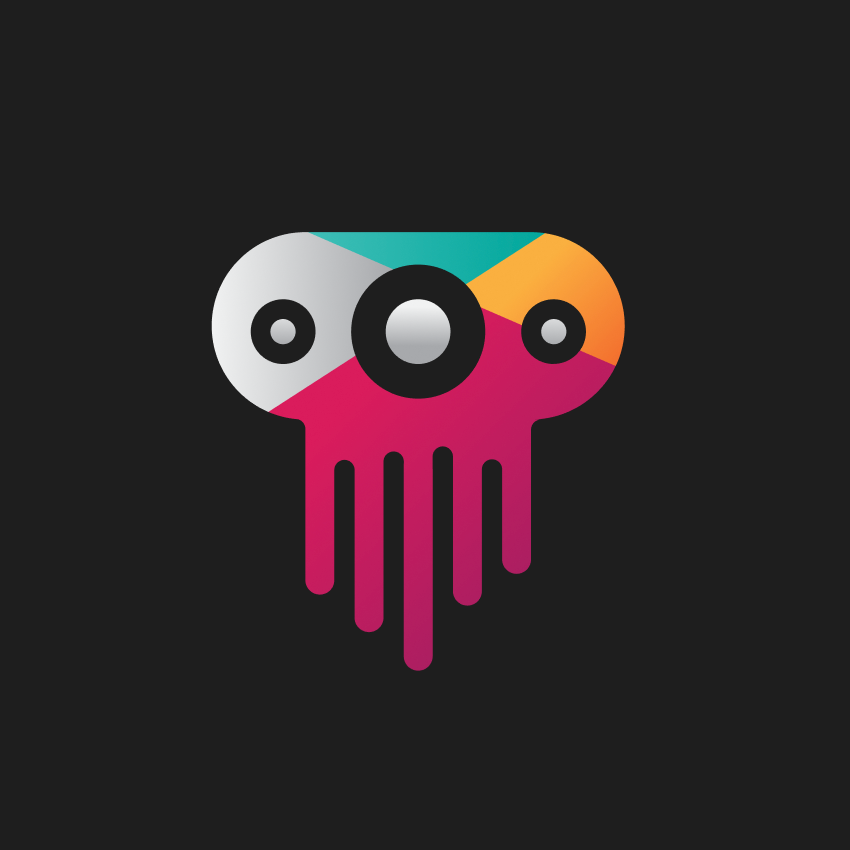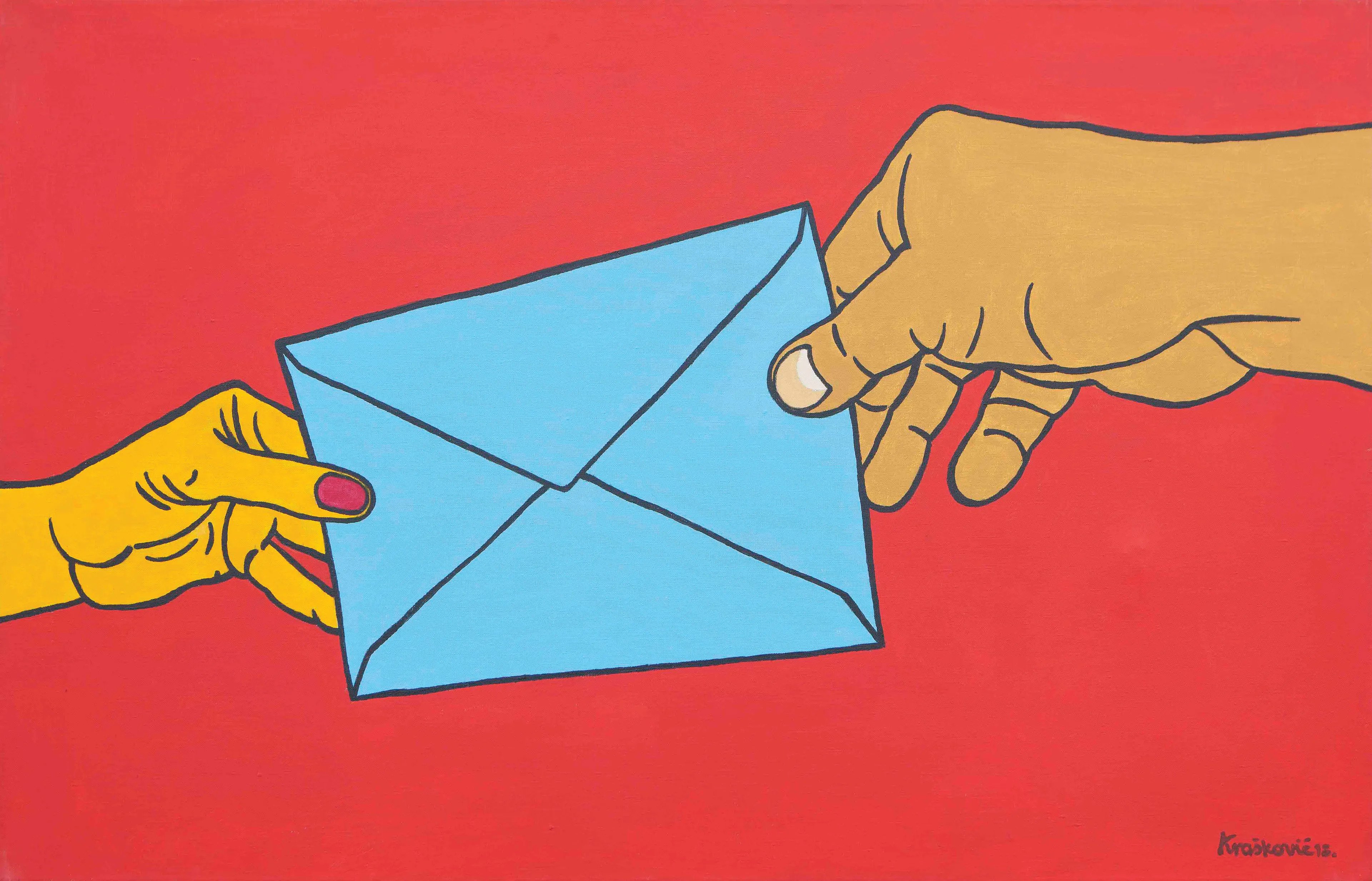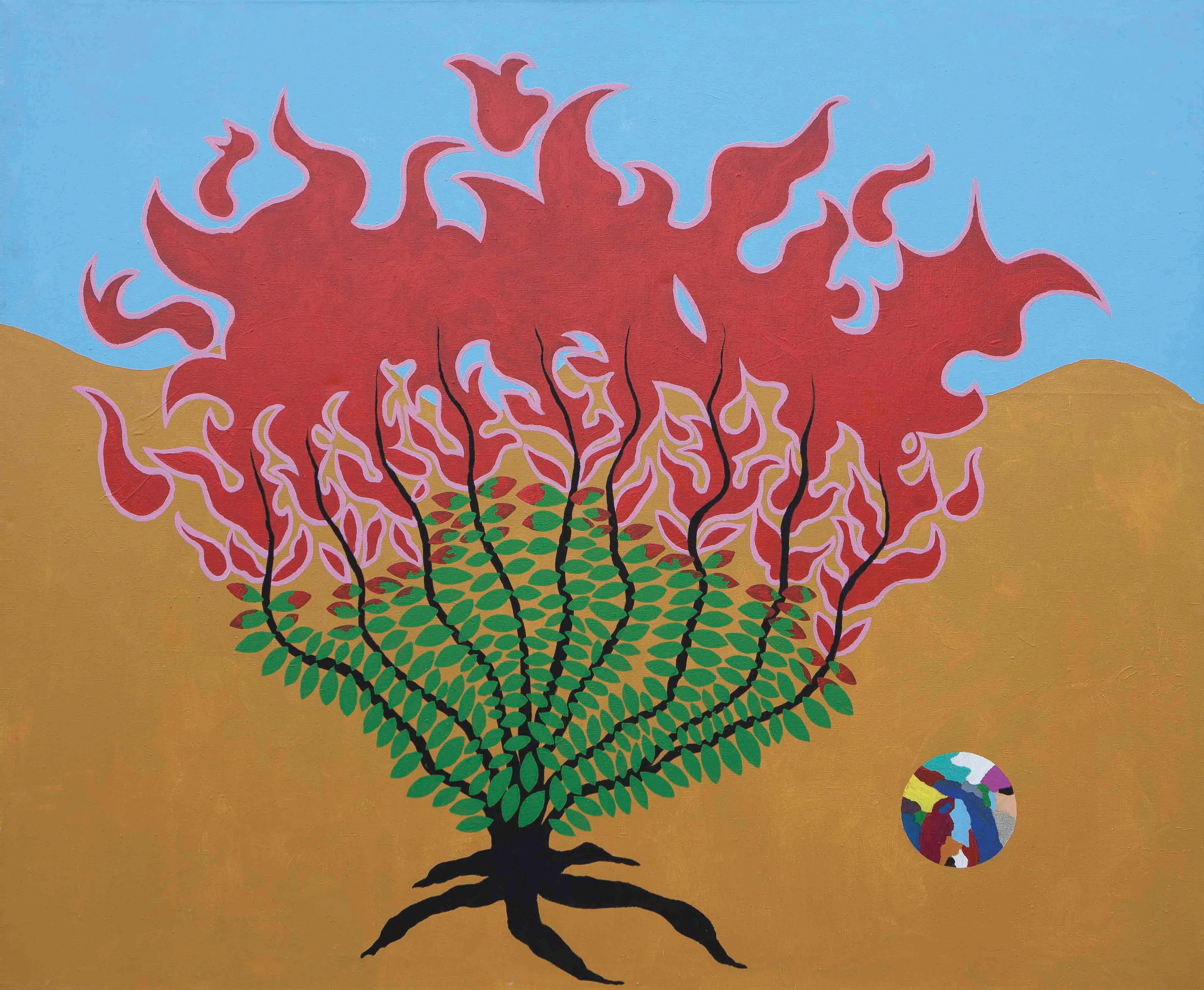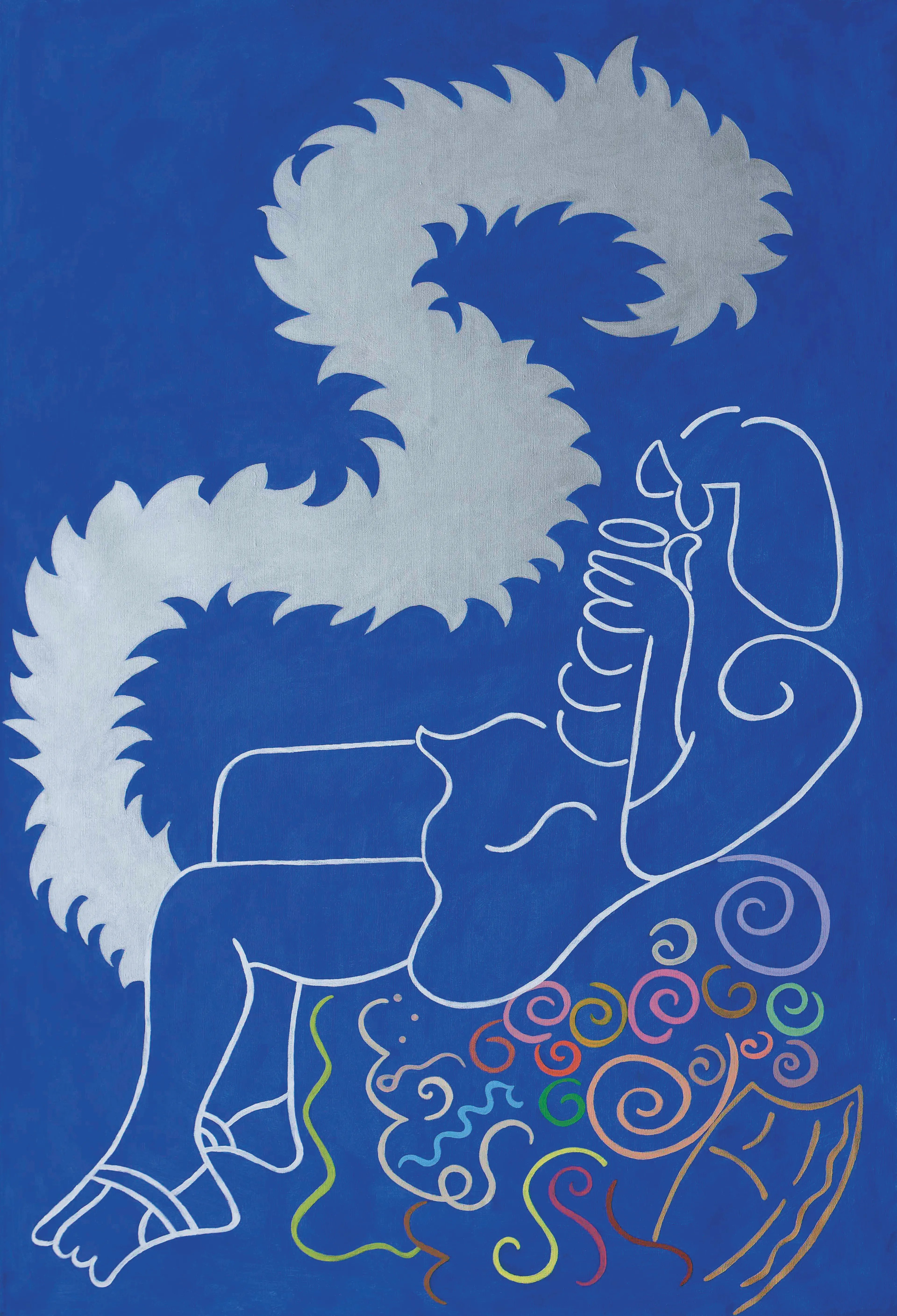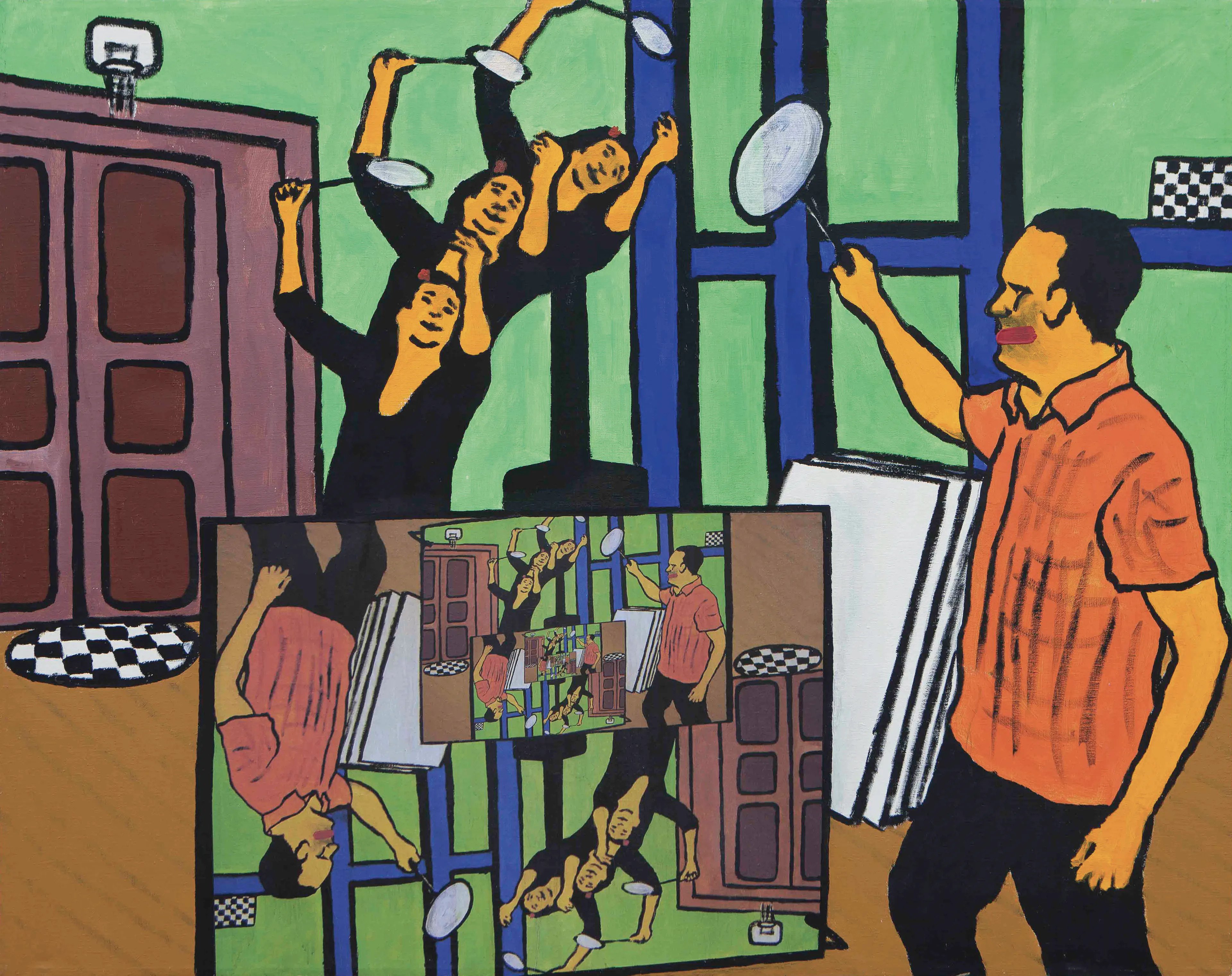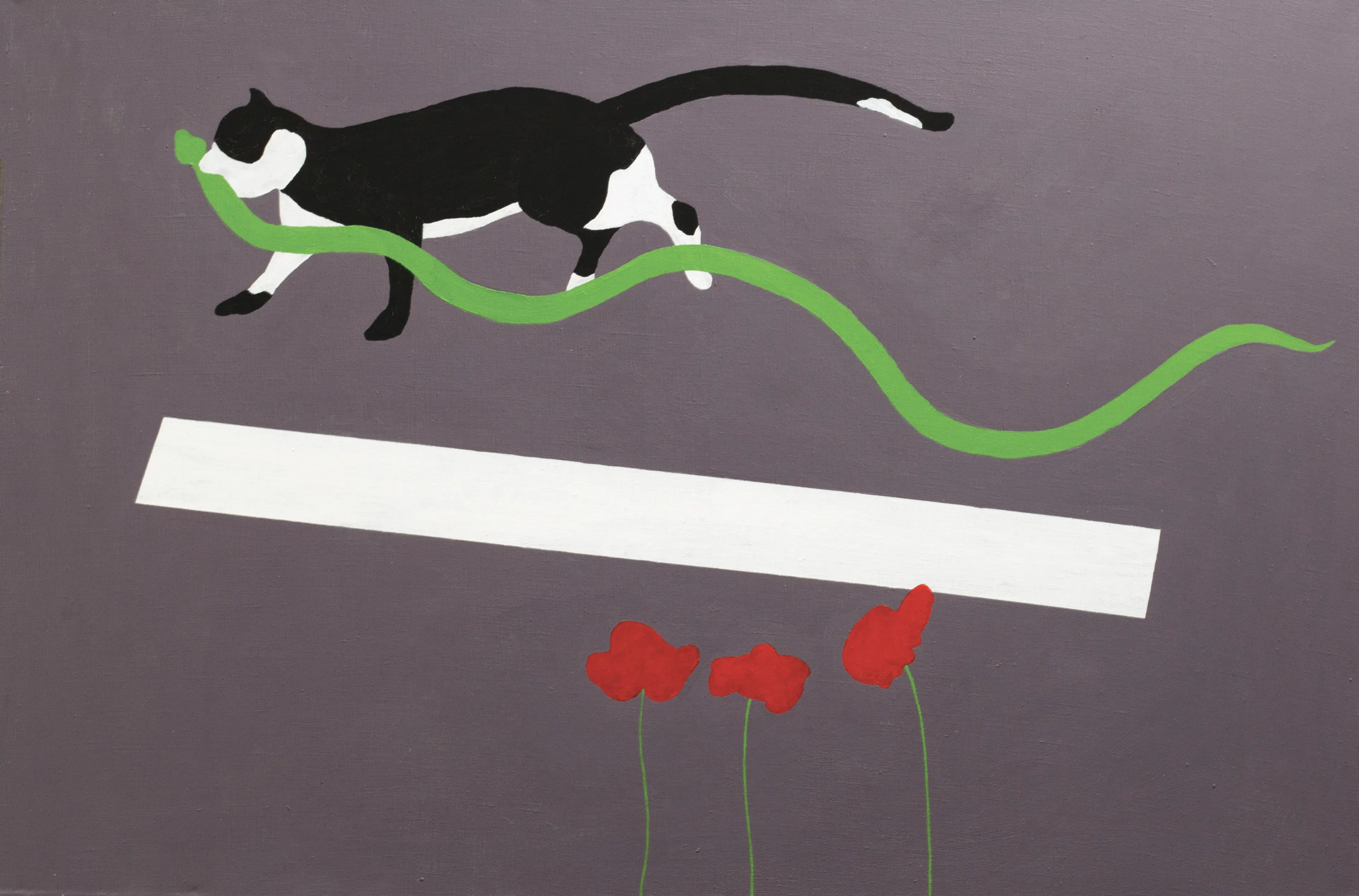Artist Denis Krašković, whose immensely rich opus is unique and captivating due to its authenticity, lucidity, empathy, playfulness (which carries underlying critiques of the existing state), continues to tirelessly create his wondrous and magnetically appealing visual worlds.
He creates because the world needs constant improvement, and Krašković envisions a better world. A world that is a warm home for all living beings, humans, plants, and animals, an imagined world where goodness prevails. However, Krašković is not childishly naive: he understands the state of affairs, but he refuses to reconcile with the harsh reality. His artistic credo resonates in each of his works: through his symbiosis of paintings, sculptures, photographs, videos, drawings, music, and graphics, he plays with genres, codes, and conventions of contemporary visual culture, as well as classical ones, revealing an insatiable longing for harmony and balance in nature, which humanity so ruthlessly destroys, subjugating all that grows or breathes to itself.
Denis Krašković (1972, Zagreb) has received numerous awards and recognitions for his artistic and educational work; among them, he received the Grand Prix of the Salon of Youth 2000 in Zagreb. He was awarded a special jury prize at the XI Triennial of Croatian Sculpture in 2012, and the same year he received the second prize at the video competition "The Residents" in Olomouc, Czech Republic. His comic "Journey to the End of the World of General Umberto Nobile's Expedition" was selected in 2015 by Q Strip magazine as one of the five best Croatian comics of all time. He has exhibited in numerous solo and group exhibitions in Croatia and abroad. He is the creator of prominent public sculptures, such as the sculpture "Whale" at the Jarun Lake in Zagreb, sculptures "Walrus" and "Lamb" in front of the Arena in Zagreb, and two monumental sculptures "Neanderthal I and II" in Krapina.
When you began exhibiting your wooden sculptures with animal motifs, it was written that you reintroduced figuration to contemporary Croatian sculpture in a grand manner. Critics linked it to the return of pop art, but after many years, it was understood that your concept has ecological roots, combined with an empathetic awareness that animals deserve their dignity. However, you don't solely speak about that. How would you summarize your "poetics" and what drives you?
My goal is to express a positive vision of life and all its manifestations and talk about them in a noble but also critical way, if the goal is to raise awareness. In my work, I try to express love for nature and all its beings and forms. The more beautiful side of existence is the subject of my art. I started working with wood during my time at the School of Applied Arts and Design, and continued later at the Academy of Fine Arts in Zagreb. Since my graduation project was also in wood, I naturally continued working with that material. My first solo exhibition was in wood at the Gallery Nova ("Journey to the End of the World", 1995), where I displayed polar animals, which in a way defined me for the future, as I often speak through my works about critically endangered species, which is a frequent motif even today. However, I'm not exclusively a figurative artist; I work with "abstraction" as well, which often brings me joy. It's not easy to say that figuration needs to make a grand return or be further engaged with, as it's quite logical that people enjoy recognizable motifs. Although in visual arts, style and motif don't determine quality, that part of the story is up to the artist!
The critics often emphasize your uniqueness and authenticity, stating that you're different from everyone else. You've never "copied" from others; you occasionally refer in a witty way to certain Dadaist concepts (motifs of bread, pears, toilet bowls). You undoubtedly have an excellent sense of humor, and although you deal with harsh actions of people who are destroyers of all living things, you don't lean towards nihilism. Is humor your survival mechanism, or is something else at play?
Humor is a savior for people. It's often trivialized and underestimated as an approach to artwork or as content of an artistic form. Humor is a product of human spirit and intelligence, helping us survive in this demanding world. Moreover, I consider art a kind of prosthesis for humans who seek more than the existing reality and life. By the way, it's not quite true that I didn't have influences in my life. Initially, Matisse, Léger, Duchamp, Piccabia, etc., were my influences; however, it's crucial for an artist today to develop their recognizable style.
You carefully choose titles for your works. It seems you have a hidden literary talent and even an editorial one, as your titles allow viewers to immediately connect with your artworks. Your relationship with the observer is filled with respect. Actually, your deep ethics are evident in everything you do, and it's clear that you're not dictating what should be done but contributing to change for the better through your work. What emotions do you see in the observer when you can tell yourself that your work has succeeded?
The title of an artwork is personally important to me. The title defines and gives identity and an initial association to the viewer. Although many visual artists don't find this aspect significant and sometimes label their works as "Untitled," I believe that a title is an additional opportunity to expand and understand the artwork. As for people's emotions towards my visual work, I truly leave that to the audience. That's not my job. My job is to execute and present the work as best as I can, but nevertheless, I believe that people mostly like my work, both the general public and critics. The most important thing for me is that children fall in love with most of my works. They are the most sincere audience, and that means the most to me.
You have an impressive body of work, but you don't rest and constantly explore new genres. You're just venturing into the world of NFTs... When did you first become interested in NFTs, and what attracted you to this medium as a way to exhibit your art?
I believe that new ways of doing business and communication should be embraced, and that doesn't mean that visual art loses anything; on the contrary, new opportunities are opening up. Of course, this is an excellent form of selling and buying art that benefits everyone involved in the system. Art knows no boundaries, doesn't it!
In discussions, you often emphasize the importance of words. One of your sculptures ("Upturned Tongue") from the "NO" cycle is named "Don't Pull Me," which speaks to the significance of spoken words and sentences. However, your medium is not primarily words, apart from the aforementioned titles. Are you afraid of the nullification of responsibility for spoken or drawn words in the future? Could AI eliminate it? Could the use of powerful technologies eliminate the ethical standards you strive for, as all information becomes accessible to everyone, and humanity might get lost in that cacophony?
In the Bible, the first sentence is: "In the beginning was the Word, and the Word was with God, and the Word was God. It was in the beginning with God. Everything was made through it, and without it nothing was made..." AI programs have established the word as the basis of thinking and creativity, which is extremely important for all arts and creative professions. Of course, like any novelty, it provokes controversies, but I enjoy that "circus." I work quite a bit with AI programs and am preparing an exhibition where I'll combine my expression with AI works, which I play with daily and am very excited about.
You've prepared your first NFT collection for Endemic. What guided your choices?
My first collection of about ten NFT works represents a brief overview of my painting. I chose works that I believe possess quality, meaning, and the ability to communicate generally with people, especially with art enthusiasts who will, hopefully, recognize my works as values close to themselves.
In one of our conversations, you mentioned that you don't see a fundamental difference between working by hand and using technology, such as a 3D printer. These are all tools, and you are the creator. It seems to me that's the right way to perceive digital art because ultimately, everything can be art if the artist controls the creative process. Is there still a difference in the creative process itself?
Of course, in a technological sense, processes are different, for example, modeling clay or working with a CNC machine; however, behind it all stands a similar principle of composition, that is, a certain work and creative process. People see a machine sculpting a sculpture like peeling a potato, but they often aren't aware of the amount of time, preparation, and energy behind that final process. Technology isn't the essence; the essence is the sentence, the thought, the idea, or in AI terminology, the prompt! By the way, the future is in 3D printing; it just needs a little more time to expand and become more accessible and of higher quality.
We know that you don't hold a particularly high opinion of humanity because humans are ruthless and greedy beings who believe that everything must be subservient to them. How do you see digital ownership in the context of this inevitable truth? Can the greedy Homo sapiens understand that ownership that can't be "stuffed into a sock" is as valuable as what's in a digital wallet?
I actually love people, but their nature is unpredictable and fickle. We're worse than any animal species because we possess a destructive character. With this level of consciousness, we must primarily fight individually, but since the world has become a global village, collective consciousness is important as well. Regarding people's attitude towards digital ownership, I believe that issue is settled. Cash accounts for only a small percentage of transactions in the world. We all have electronic accounts, cards, passwords, and it's genius. The distinction between digital and real wallets is slowly disappearing.
Lastly, music. It's an important part of some of your works. One of them is "What a Wonderful World." Is the world still "wonderful" to you?
That's my work I just completed, and I'm truly satisfied with my eighteenth public sculpture. It's a large sculpture (7 meters in length) called "What a Wonderful World" in Lokve, in Stara Sušica near Frankopan Castle in Gorski Kotar. The sculptural composition titled "What a Wonderful World," which I worked on for a long time, is a public sculpture that, like Louis Armstrong's famous evergreen song, calls for love and goodness, glorifying nature and positive manifestations of life. The landscape where the work is placed greatly dictated the concept and idea of the piece (lake, forest, castle, path...). The sculpture praises the beautiful environment, but besides its artistic function, it can also have practical use. In the winter period, it can serve as a feeding place for forest animals. The base of the work is actually a traditional hayrack, which is part of the local landscape. On it, like on a musical staff, notes are placed, or rather, the music of old Sache. Music, like art in general, has the power to celebrate the world, to remember it, but also to change it. This work aims to beautify people's lives, just like, I hope, my other visual works do.
